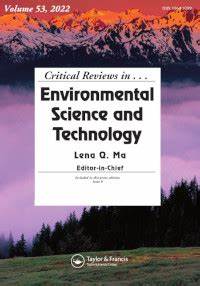A review of inland nanofiltration and reverse osmosis membrane concentrates management: Treatment, resource recovery and future development
IF 13.2
1区 环境科学与生态学
Q1 ENVIRONMENTAL SCIENCES
Critical Reviews in Environmental Science and Technology
Pub Date : 2025-05-19
DOI:10.1080/10643389.2024.2436161
引用次数: 0
Abstract
Nanofiltration and reverse osmosis have become prevalent methods for treating inland wastewater because of superior separation efficiency and operational simplicity, yet they produce highly polluting membrane concentrates (e.g., from municipal potable water and municipal and industrial wastewater) containing biological, organic, and salt pollutants. Managing membrane concentrates poses significant challenges, often resulting in underutilization of their valuable components. This paper discusses strategies for reducing, rendering harmless, and utilizing resources from membrane concentrates, along with their future development trends. Methods for reducing membrane concentrate formation, such as optimizing operational modes and membrane modification, are examined. Generally, the preprocessing methods can be used as an oxidation pretreatment to improve the removal of macromolecular pollutants in the membrane concentrates, and provide conditions for the targeted removal of non-biodegradability emerging contaminants by free radicals in the oxidation process. The biological treatment further treats biodegradable pollutants. Finally, biosafety and water quality can be guaranteed through the membrane process, so as to achieve near-zero emissions. Resource recovery options include the production of salt crystals (e.g., potassium and magnesium phosphate, hydroxyapatite), microalgae resources, and others. Additionally, non-chemical pretreatment before membrane processing is proposed to simplify the treatment of membrane concentrates. A new analytic hierarchy process aids in selecting appropriate treatment and resource utilization processes for membrane concentrates. Furthermore, there is a call for the establishment and reinforcement of water quality legislation to address emerging contaminants in membrane concentrates, as well as regulations governing the purity of resources such as salts recovered from membrane concentrates.内陆纳滤和反渗透膜浓缩液管理综述:处理、资源回收及未来发展
纳滤和反渗透由于分离效率高和操作简单,已成为处理内陆废水的常用方法,但它们产生的高污染膜浓缩物(例如,来自城市饮用水和城市及工业废水)含有生物、有机和盐污染物。管理膜浓缩物提出了重大挑战,往往导致其有价值的成分利用不足。本文讨论了膜浓缩物资源减量化、无害化和资源化利用的策略,以及膜浓缩物未来的发展趋势。探讨了减少膜精矿形成的方法,如优化操作模式和膜改性。通常,预处理方法可作为氧化预处理,提高膜浓缩物中大分子污染物的去除率,并为氧化过程中自由基对不可生物降解的新兴污染物的靶向去除提供条件。生物处理进一步处理可生物降解的污染物。最后,通过膜工艺可以保证生物安全和水质,实现近零排放。资源回收方案包括生产盐晶体(如磷酸钾、磷酸镁、羟基磷灰石)、微藻资源等。此外,建议在膜处理前进行非化学预处理,以简化膜精矿的处理。一种新的层次分析法有助于选择合适的膜浓缩物处理和资源利用工艺。此外,还呼吁建立和加强水质立法,以处理膜浓缩物中出现的污染物,以及管理从膜浓缩物中回收的盐等资源纯度的法规。
本文章由计算机程序翻译,如有差异,请以英文原文为准。
求助全文
约1分钟内获得全文
求助全文
来源期刊
CiteScore
27.30
自引率
1.60%
发文量
64
审稿时长
2 months
期刊介绍:
Two of the most pressing global challenges of our era involve understanding and addressing the multitude of environmental problems we face. In order to tackle them effectively, it is essential to devise logical strategies and methods for their control. Critical Reviews in Environmental Science and Technology serves as a valuable international platform for the comprehensive assessment of current knowledge across a wide range of environmental science topics.
Environmental science is a field that encompasses the intricate and fluid interactions between various scientific disciplines. These include earth and agricultural sciences, chemistry, biology, medicine, and engineering. Furthermore, new disciplines such as environmental toxicology and risk assessment have emerged in response to the increasing complexity of environmental challenges.
The purpose of Critical Reviews in Environmental Science and Technology is to provide a space for critical analysis and evaluation of existing knowledge in environmental science. By doing so, it encourages the advancement of our understanding and the development of effective solutions. This journal plays a crucial role in fostering international cooperation and collaboration in addressing the pressing environmental issues of our time.

 求助内容:
求助内容: 应助结果提醒方式:
应助结果提醒方式:


